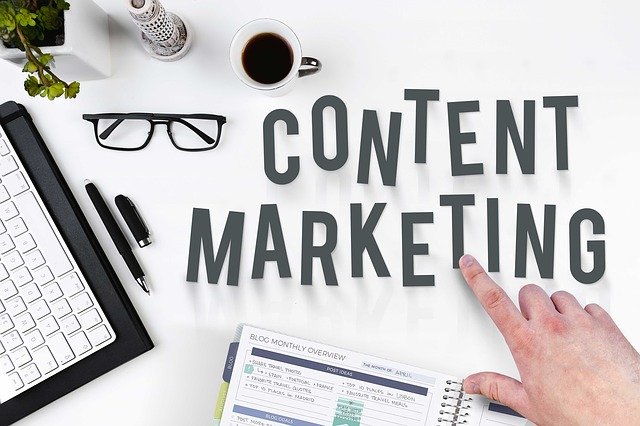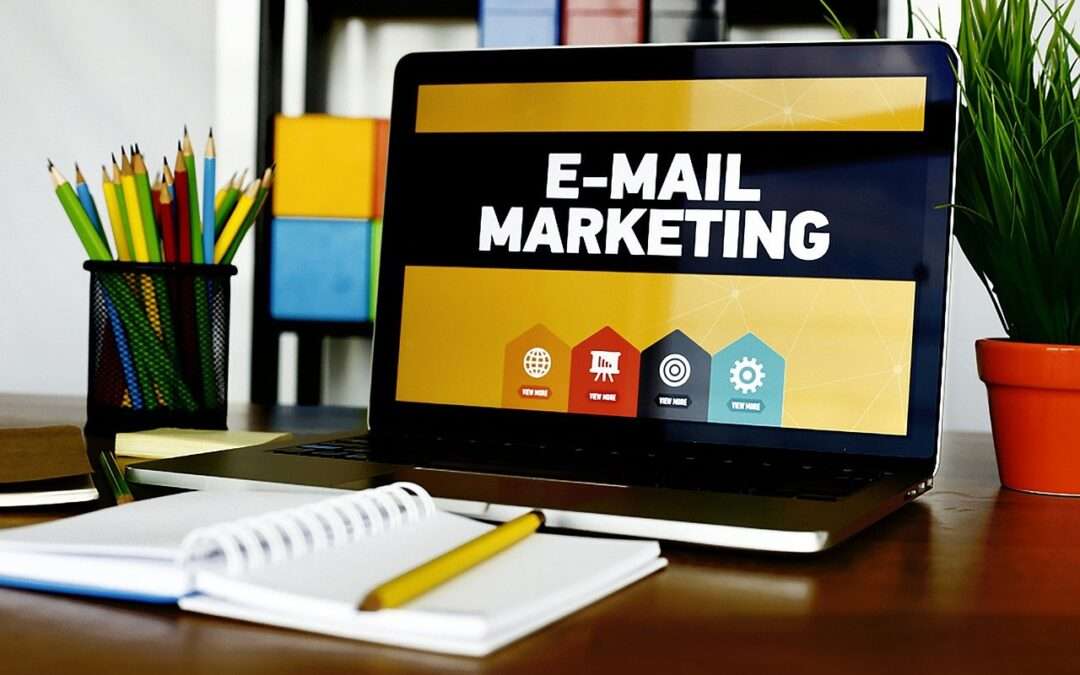
by Suellen | Email Marketing, Online Success
I think back to when I first started online.
I had written my first book and “they” told me I needed a website and needed to be active online. So I got my first very amateurish site up, and thought I was doing great.
About this time, one of the marketers I had signed with sent an email advertising a Social Media Summit – where I could learn from the experts. It included 6 weeks of biweekly sessions with about 17 experts – and I mean, experts. Cocky at the moment, I thought, sure I’ll sign up for that.
It was great, and I did learn a lot.
However, it was like I had just mastered my Multiplication Tables and was thrown into an Advanced Calculus class. Everyone was throwing out terms and jargon which meant nothing to me. The others understood each other, and they would be talking back and forth, obviously learning from each other.
Much of the time, I had no idea what they were talking about.
I made a promise to myself. I was never going to “assume” that my people knew things about the internet. Or websites. Or writing. Or blogging. Or any of the things I wanted to share.
I was going to explain.
So here goes. Today I want to share some of the email marketing terms we throw around. Even if you know it all, you might want to have a refresher.
Email Marketing: This applies to the science – and art – of using email to market your products or yourself. As you send emails to people, they will get to know you. You want to provide good information – not just sell, sell, sell. Yet there can be some links for them to go to your blog or your offers. That’s how you sell.
Content: Content refers to written word, photos, videos, or speech which you provide to your audience. Your blog is content. So is your podcast. Or your YouTube offering. Also the messages you send in your emails are considered content. (And none other than Bill Gates said that Content is King).
Email List: Your email list is the group of people who have signed up to receive emails from you. Many people say that your list is your most valuable business asset. It’s like they have raised their hand saying, “Yes. I want to hear from you.” Treat them well, and they will continue to be your friends. Note: It’s not a good idea to purchase a list. Reputable email providers require that your list be made up of people who have requested something from you. Otherwise, you could be accused of sending spam.
Email Provider: The company which handles your emails. There are some really great providers which allow you to send and schedule emails and segment your lists. Some even have a Landing Page service and Webinar option. I love GetResponse. I have tried several services and GetResponse is my favorite. They have lots of great services, super training, and unbeatable customer service.
List Segmentation: Some providers allow you to tag the names on your list so that they will receive only certain emails. But not others. This really helps to target your audience with what works for them.
Autoresponder: An autoresponder is an amazing tool. You can set up a series of emails and schedule them to go out on the time frame you choose. For instance, when they first sign up, there can be a welcoming email – and then a progression of emails sent out every day or two (as you set it up) automatically. This can run indefinitely, as you choose.
Funnel: The funnel is the complete system you set up to go out automatically. It’s on your autoresponder and goes out even when you sleep. From the signing up for your email to a few emails you may send and then finally for a purchase you have set up. You will have many funnels as you grow. For new customers and for each offer you set up.
Link: A link is a web address you put into your emails. When your readers click on this address, they are sent to your offer, a blog post, or such.
Opt-In: An opt-in is your signup form for email. You can have one designed by your provider, or you can design your own at your website. Often this will include a free offer in exchange for their email address.
Double Opt-in: A double opt-in means that when someone signs up for your email, the first email they receive is a confirmation that they really want to receive your emails. There is a link to click, verifying that they really want to sign up. (This option is to ensure that they aren’t receiving spam).
Landing Page: A landing page is an opt-in page or a product page which includes your signup form or a button to download a product. The way this works is you have a link from social media or your website with an offer. An ebook, a tip sheet, or such. When they click the link, then they are sent to the signup page. (Landing pages work especially well with social media. You don’t have to pay for an ad; you just have a link).
Thank You Page: The thank you page is after the signup or click for an offer. You thank the customer and include the download button to access the offer.
Download: Most of your products and offers will be accessed as a download. Your offers will be housed on a cloud platform and the download button is set up with a link to that product. (I use Amazon cloud services. Aws.amazon.com. They do a great job, and it’s an inexpensive service unless your volume is huge).
Lead Generation: You want to find places to put your offer. Lead generation refers to the task of looking for prospects. You can put your offers on social media, in blogs, on business cards, or many other places.To grow your list, you need to find new leads.”
Open Rate: This refers to the percentage of people who open your emails when you send them. Don’t worry if your open rate seems low. When I first started, I was expecting a 95% open rate. That’s not realistic. many people say that 20% is a good rate. People are busy and they don’t open all of their emails.
Click-through Rate: This is a percentage of people who click on the links in your emails. This rate is much smaller tan those who open. 10%-15% is a super rate.
Conversion Rate: This is the percentage of people who actually buy, Usually a very small percent will actually purchase. That’s why you need a larger list.
These three percentages: open, click-through, and conversion are kept by your email provider. They are the metrics which you observe and try to improve to be more effective – and make more money.
Email Audit: An email audit is a good hard look at your email campaigns to see what is working and what isn’t. if nobody or only a few are signing up for an offer, then you will want to notice why. If people are opening and not clicking on your offers, ask yourself why.
This 30 Challenge we have been doing is to look at our emails and decide how to improve. How do we grow our list? How do we make better offers and put them in better places online? How do we improve our emails? The Topics? The Titles?
The goal is to end this 30 period with a much greater understanding of ur email marketing plan. And more effective email campaigns.
Remember, we an do this!
To sign up for the 30 Day Email Challenge, you can go Here.

by Suellen | Email Marketing, Online Success
Six Secrets to Creating the Perfect Email Funnels
Email marketing has by far one of the largest returns on investment compared to other forms of marketing. However, that doesn’t mean it is straight forward nor will you see results just because you have a campaign set up. Like most things in life, there are important rules to follow to get to success.
Here are six secrets to creating a powerful email marketing funnel:
Lead With Your Goals in Mind
Before you develop any content, you need to clarify your marketing goals. For example, are you looking for more exposure to increase your sales? Are you hoping to educate your audience? Or both?
As you can see, these are important questions. Answering these and similar ones can lead you to the type of information you need to create. Also, how you can develop the right calls-to-action to see proper results.
Add Readers to Multiple Sequences and Segments
Remember, your readers can be on different journeys. Some will be brand new, and others will be avid users of your products. Meaning they shouldn’t be on the same email sequences or segments.
Likewise, if you have multiple products, they may not all be interested, making segmentation important. Welcome emails, abandon carts, or re-engagement emails are a few different examples.
In my case, some of my people are writers and want to improve their skills. Others are primarily interested in the income they will need to continue their blogging. Thus, they are more interested i affiliate marketing.
So you can see that to be more effective, I should be sending out different emails to address the different needs and desires of my audiences.
You can evaluate your audience. What do they want and need? That’s how you can segment them. If you are not certain about segmenting your emails, GetResponse has excellent training videos to improve your skills.
Keep Your Content Funnels Varied
In other words, don’t just sell to your readers. Make sure there is a mix of value, promotional and fun. If all you do is sell, sell, sell, your audience is more likely to be turned off and eventually unsubscribe to your email campaign.
The best policy is to lead with generosity. You don’t need to make a sale after every email you send. Providing value without anything in monetary return is often the best way to see success.
This is what establishes your credibility, trust, and awareness as a brand. Eventually these work together to bring you more influence and more profits.
Take Advantage of Your Titles
Titles are the most important part of the funnel. Sure, you need their email address. Yet just having their address and sending them emails doesn’t mean they will read them.
So you still need to capture their attention, and your titles and subject lines will do that.
A special tip here is to create more than one subject title and test them on different readers.
So Test Your Funnels
We’ve talked about testing several items. Open rates for certain times, etc. One of the most important is the subject line (title) you share.
HubSpot’s “Ultimate List of Marketing Statistics for 2021” report stated, that nearly 47% of marketers test different titles to see which ones perform the best.
Some key aspects for successful titles include clarity, urgency, curiosity, and relevance. In other words, make sure they know what they will get but don’t give too much away.
Then be sure that the email you present to them satisfies the expectations of the title.
Focus on Retention of Your Customers.
You got the sale, but that doesn’t mean the work is over. You must further nurture and inspire your customers to keep them interested and coming back for more. One sale won’t lead to sustainability.
So there we have Six Secrets for greater productivity in your email campaigns.
Be sure you get the results you need from your email marketing campaign by following these six secrets to creating a powerful email marketing funnel.
As long as you have the secrets, take action, and continue, you will see the results.
Sign up for this 30 Day Email Marketing Challenge Here.

by Suellen | Meeting the Challenges, Vision and Goals
Do you pray over your business? I do.
In fact, I often start my morning with an hour or more of spending time with God. Praying, listening, and reading the Bible.
I consider him to be the CEO of my business. I’m the COO. He’s the boss. I just carry out His plans.
So what difference does this make?
First, spending this time helps me stay focused on the right priorities. My number one priority is to serve my customers – helping them to achieve their goals. I want to offer products and services which bless them abundantly.
Second, this special time helps me gain clarity. Often as I pray, the Holy Spirit gives me new ideas and shows me where I’m not being as productive. What to pick up and what to put down. With clarity, I can approach the day with a clear picture of what I want to accomplish.
Third, praying gives me confidence. I know that I have God’s hand on my business and He is empowering me to achieve His goals. So I know that I will be successful in what I am doing because He is with me in the process.
So how about you? Do you pray over your business?
I would love to hear your thoughts about this.

by Suellen | Email Marketing, Online Success
It’s time to talk about “red flags” in your email funnels.
Now here is where the rubber meets the road. And I have to admit, this is not my favorite part. But it’s necessary to take notice, if you want to have productive emails.
To perfect your email marketing funnels, you need to be aware of certain factors that hinder your success. Many red flags are obvious if you just know where to look. Thankfully these red flags have plenty of solutions to them as well.
Here are five common email funnel red flags we need to notice.
Low Open Rate.
While this is not a metric you usually want to use on its own, a low open rate at least indicates that your subscribers are not reading your content.
This could mean several things. It could mean that your emails aren’t being delivered as they should. Or maybe your subject lines aren’t grabbing their attention. Or you are sending them at the wrong time.
Take notice of these three things. A good internet provider (such as GetResponse) will show statistics on all of these items so that you can see how you are doing.
Try different subject lines. Also try sending the emails at different times.Tweaking here and there can produce better results.
However, a high open-rate will not always translate to success, so you should always track other metrics to measure your results more accurately—for example, a high open-rate with a low click-through rate.
High Open Rate with Low Click-Through Rate
This means you are on the right track as your readers are interested, but something about the product you are advertising is off. Maybe the price is too high, or it doesn’t actually solve their problem.
High Click-Through Rate with Low Conversions
Again, this can be associated with the same problem presented above. The readers are clearly enjoying the content as they click through; however, you cannot make the final conversion.
This could indicate a disconnect in your landing page from your email. Your email had enough detail to persuade them to click on the landing page; however, the expectations were not set.
Be sure you don’t have any misleading discounts and that your email and landing pages have similar expectations.
High Unsubscribe Rate
This can happen for a couple of common reasons. First, you are either marketing your opt-in copy or forms to the wrong people, sending out too many emails, or are developing copy that is not compelling enough or too spam-like for your audience.
Some marketers say that to solve this you need to keep your sequences short and direct and not send emails too often.
I have a different take on this. Of course, you don’t want your true customers to start unsubscribing. However, when people unsubscribe, I just think they aren’t my true customers. In fact I don’t want people on my list who are totally disinterested in my information.
So the idea is to know your target audience well, including how you can help them. Then you can develop the right content, products, and services to prevent a high unsubscribe rate.
Usually, your unsubscribe rate is not a problem if you start with your buyer personas in mind. There will always be a few, and you can’t worry about that.
Varying Unsubscribe Rates Per Sequence
You want to take notice of this one.
Some email sequences may be too long, too short, or seen as spam. Also, some customers may end up in the wrong sequence leading them to unsubscribe. (Thus you should be sure most of your readers are in more than one sequence).
Email marketing isn’t an exact science. You are working with many different people and many types of personalities. Don’t take it as an insult when people don’t open. don’t buy, or unsubscribe.
We notice these red flags so that we can increase our effectiveness. We continue to look for the right people and offer them an opt-in. Then we notice if they open, if they click, and if they buy.
Then we boldly and confidently try new things. We might land on a truly successful approach which will surprise us.
Successful email marketing will always require consistent reviewing and updating.
And the more we continue, the more successful we will become.

by Suellen | Email Marketing, Online Success, Success
Crafting the right Email funnels is an important marketing strategy to understand if you want to better communicate with your audience and to increase your profits. While it may be hard to believe, email marketing still out-performs social media by nearly forty percent. Not only does email marketing generate more revenue, but it is also more productive as it is three times faster.
Here are four easy steps to creating a high-converting email marketing funnel:
Step One: Find more customers and sign them up for email.
The first crucial step to creating a high-converting email funnel is to create brand awareness and find more customers. (This is often called Lead Generation). Focus on creating a process that draws in your target audience. Usually this is an offer with an opt-in form. Your offer of a free product is an incentive to get their information and start them down the email funnel. Once they opt-in, they’ll become a new subscriber and receive your hearty welcome email.
Step Two: Continue to send value-filled emails.
You will further build their interest with great content. Your emails will provide information and teach them about your products or services without focusing on promotions. This step is about building a stronger relationship with your customers to keep them around long-term. It allows you to form a deeper connection with your audience. Engaging content leads to more action.
Step Three: Content Persuasion
Once strong relationships are built with your readers, you want to persuade them further to make a certain decision. This is where the promotional content begins to flow into your sequences and your readers start to make purchases and become loyal customers.
In this step, be sure you always include an easy and obvious call-to-action, so your audience knows what to do. Your click-through rate depends on it.
Step Four: Engage and Follow Up
Nurturing your leads never stops. The step keeps going as is required to keep their interest and see more conversions. Even after your readers purchase, you want to follow up with them and keep them engaged.
Send thank you emails and invite them to other groups or platforms that teach them how to use your products or services even better. The more places and ways you can keep your audience engaged, the better and fewer chances for them to unsubscribe or become disinterested.
So there you have it.: your email funnel formula. Four steps to follow again and again. Sign up email customers, nurture them with a series of emails containing valuable information, offer them something to purchase, and continue to engage them for the follow up.
Following these steps ensures you have everything you need to create high-converting email funnels. A great marketing strategy for the highest return on your investment.
This costs little to nothing to get started, but can reap great rewards when you continue.
Forever Upward!
Suellen

P.S. If you want to know about a terrific email provider, you will want to check out Get Response. You can find them Here.
















